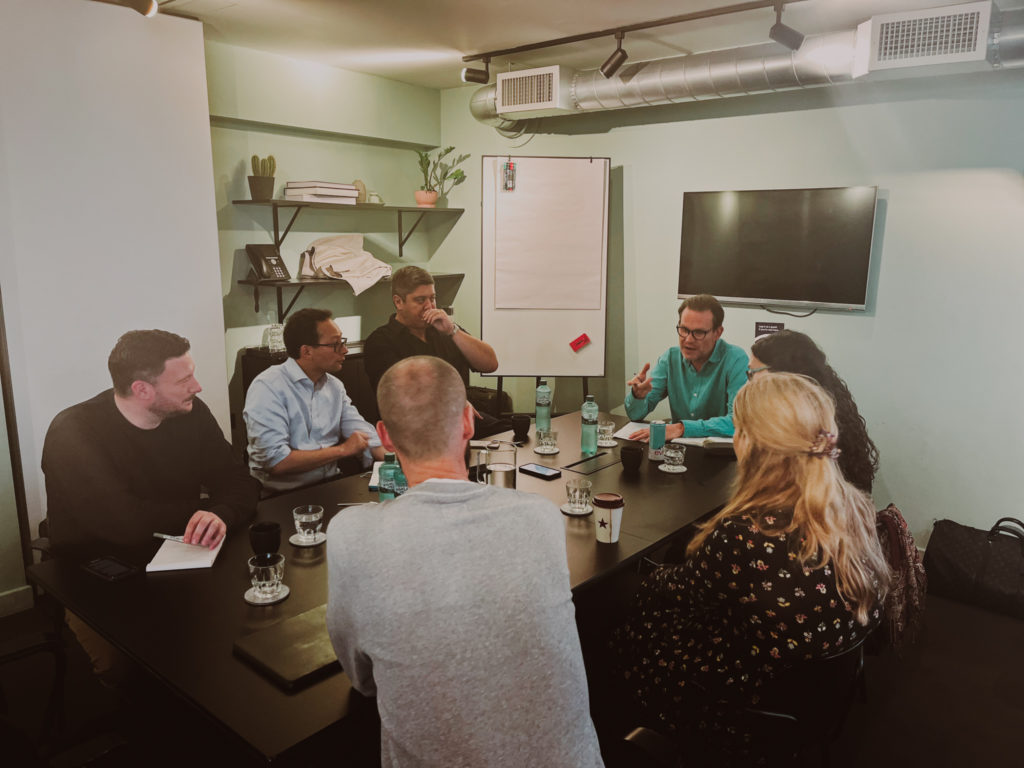With the original generation of console gamers now in their 50s, does the marketing industry’s conception of what a gaming audience looks like need to evolve? How can marketers better recognise the huge scope of ‘the gaming community’ and the range of audiences to be found there?
New Digital Age (NDA) recently gathered a panel of experts to debate this and other hot industry talking points. NDA’s editor Justin Pearse chaired the discussion, where he was joined by; Ashley Bolt, Managing Partner – Gaming at Havas Entertainment; Alex Kirby, Global Head of Programmatic at Future; Phelan Hill, Head of Strategy & Consulting at Nielsen Sports; Sophie Strong, Head of Display and Social at Wavemaker UK; Greg Carroll, VP of Global Revenue at Activision Blizzard Media; and Matt Parsons, Head of Gaming UK/Account Director at Azerion.
Havas Entertainment’s Ashley Bolt opened the discussion by noting that, for many brands, finding marketing opportunities within the gaming space can be “very scary”. He said: “There are now an estimated 3.1 billion gamers in the world, from hypercasual gamers on mobile all the way through to hardcore PC and console gamers. That’s not a niche opportunity anymore. Gaming is mainstream. There’s a lot of unfounded fear around the perceived complexity of the gaming space but I think, in general terms, marketers are beginning to understand there’s an untapped opportunity there.”
However, any marketer hoping to target ‘gamers’ as a homogenous blob is getting it wrong from the outset, argued Sophie Strong of Wavemaker UK. She explained: “We would never say ‘I want to target sports enthusiasts’ as a general group. We would identify the client’s growth audiences, then work out where to find them and how to speak to them. For some reason, though, we treat ‘gamers’ like some kind of mythical beasts. We forget that gamers also use the internet and social media apps, they search, they watch TV, they pass OOH displays. They’re the same everyday consumers that you already know.”
Alex Kirby of Future spoke of how, in a previous role with a different publisher, advertising clients would often invest in inventory tied to gaming content with a very specific, but misguided, idea of who they were targeting.
“There’s still a legacy mindset among some marketers about who the ‘gaming community’ actually is,” said Kirby. “When we actually analysed the data, it wasn’t all men in basements playing Call of Duty. The gender split and age range was far more diverse than expected.”
Another level
Greg Carroll of video games publisher Activision Blizzard Media warned that while games are entertainment in the same way as a book or TV, the interactivity of gaming makes it a uniquely complex space with inherent challenges for marketers.
“Gamers aren’t just passively absorbing content, they’re involved in what’s happening,” said Carroll. ”It’s their world, so if brands want to get involved they need to be authentic to the environment. It’s a double-edged sword: it can be a really impactful way to get a message through to a consumer but if you are hamfisted in your approach, it could do much more harm than good. No one will tell you you’ve messed up faster than a gaming audience.”
Phelan Hill of sports intelligence specialist Nielsen Sports, added: “There’s still a lack of understanding of gaming within certain agencies who use the same traditional principles to apply it to a totally different audience as compared to a generalist audience.
‘’For example, a major FMGC brand launched a glossy ad aimed squarely at the online gaming community last year. The ad had high production values, great CGI and had tested well with a generalist audience but the main idea behind the campaign focused more on the consumer product and associated feel-good feeling rather than its targeted gaming audience and totally missed the mark.’’
Matt Parsons, Head of Gaming UK/Account Director, Azerion, agreed that many clients do find the prospect of advertising to gamers intimidating, but argued that agencies are working hard to help educate advertisers and unlock the potential of gaming audiences.
He said: “The conversations we’re having with clients now are less about ‘a plan for gaming’ and more about ‘gaming as part of the plan’. Increasingly, brands know that their audience are playing different sorts of games. The next step forward will be research into how ads in gaming environments interact with and complement other media channels.”
Gaming, it seems, looks certain to play its part in more brands’ media plans than ever before.











